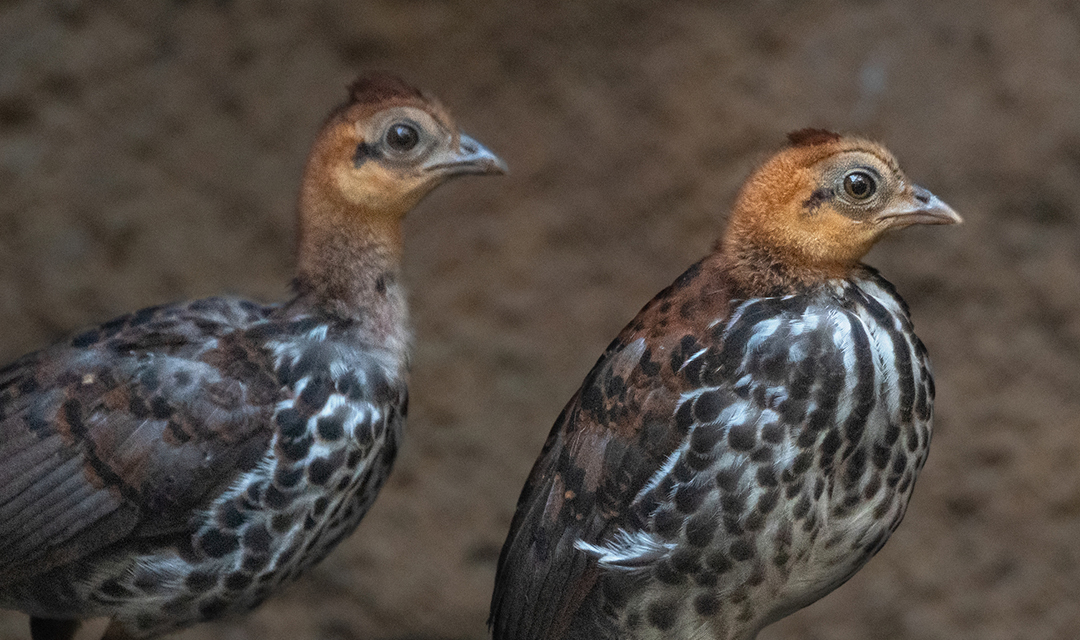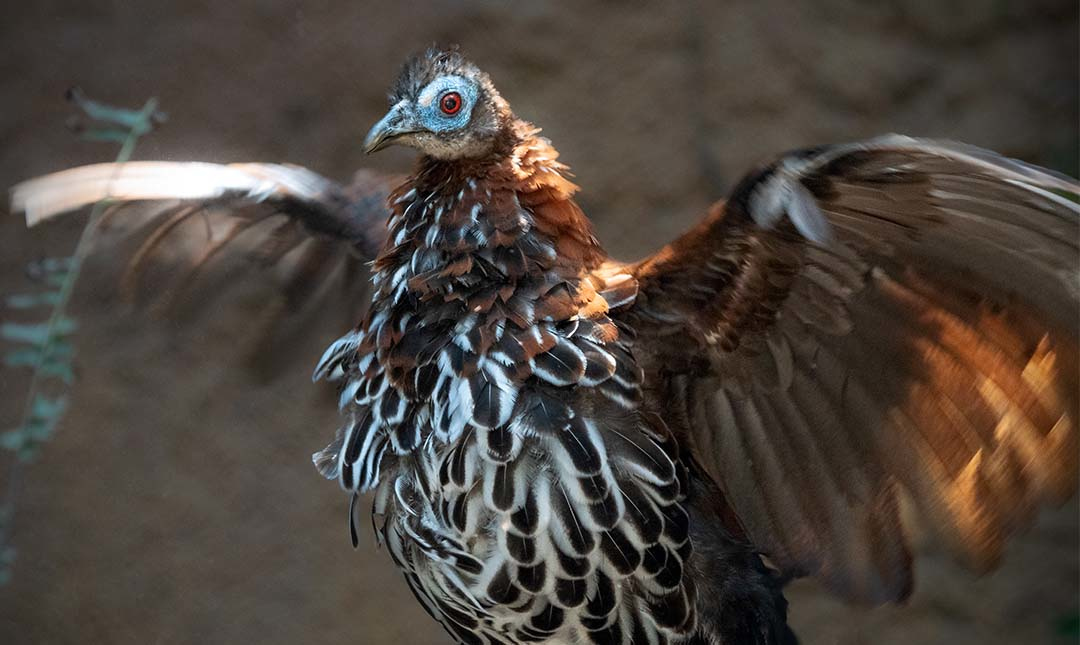About
This medium-sized forest pheasant is a relative of chickens, turkeys, peafowl, quail, and partridges. Like most pheasants, this bird is hunted and trapped for food and feathers. They have showy feathers colored purple-blue and cinnamon-buff. Males are striking to look at, with a stripe of red feathers on their backs giving them their species name ignita, which refers to fire. The cobalt blue face wattles and crested head feathers look like a Roman helmet or a Mardi Gras mask. Females are smaller with mostly chestnut feathers for better camouflage while raising chicks. This cryptic coloration allows females to safely nest on the ground.
Males are very territorial and spend a lot of time displaying for the females . Males have spurs on their feet that they use to fight other males for the right to mate with a female. In May, the hen will build a nest on the ground and start to lay a clutch of four to eight creamy-white eggs, which she incubates for about 24 days. The precocial chicks are downy at first, but youngsters resemble the hen. Males do not help incubate or raise the chicks.
Pheasant feet are designed for walking, as these birds forage for food on the ground. Being omnivorous provides more food options. They eat plants, seeds, fruit, insects, and even small mammals like mice. Short, rounded wings allow for quick takeoffs and rapid but short flights that allow birds to avoid predators. Crested pheasants do not migrate.
Populations of crested fireback pheasants are decreasing due to habitat loss from agriculture, aquaculture, logging, and forest fires. Hunting and trapping for the caged bird trade also contributes to population losses.


habitat
The native range for this pheasant encompasses the lowland southern forests on the islands of Borneo and Bangka, Indonesia, at elevations up to 3,000 feet.
Diet
Crested fireback pheasants are omnivorous, eating mostly plant matter, supplemented by seeds, fruit, some invertebrates, and small mammals.
Physical characteristics
About two feet tall, they weigh three to five pounds. Males are brightly decorated and larger in size and weight than females. Their lifespan is unknown, but most pheasants live up to three years in the wild and up to 18 years in human care.
Location Within the Zoo
You’ll find this animal in a roundhouse in the Rhino Plaza. See Zoo Map.



